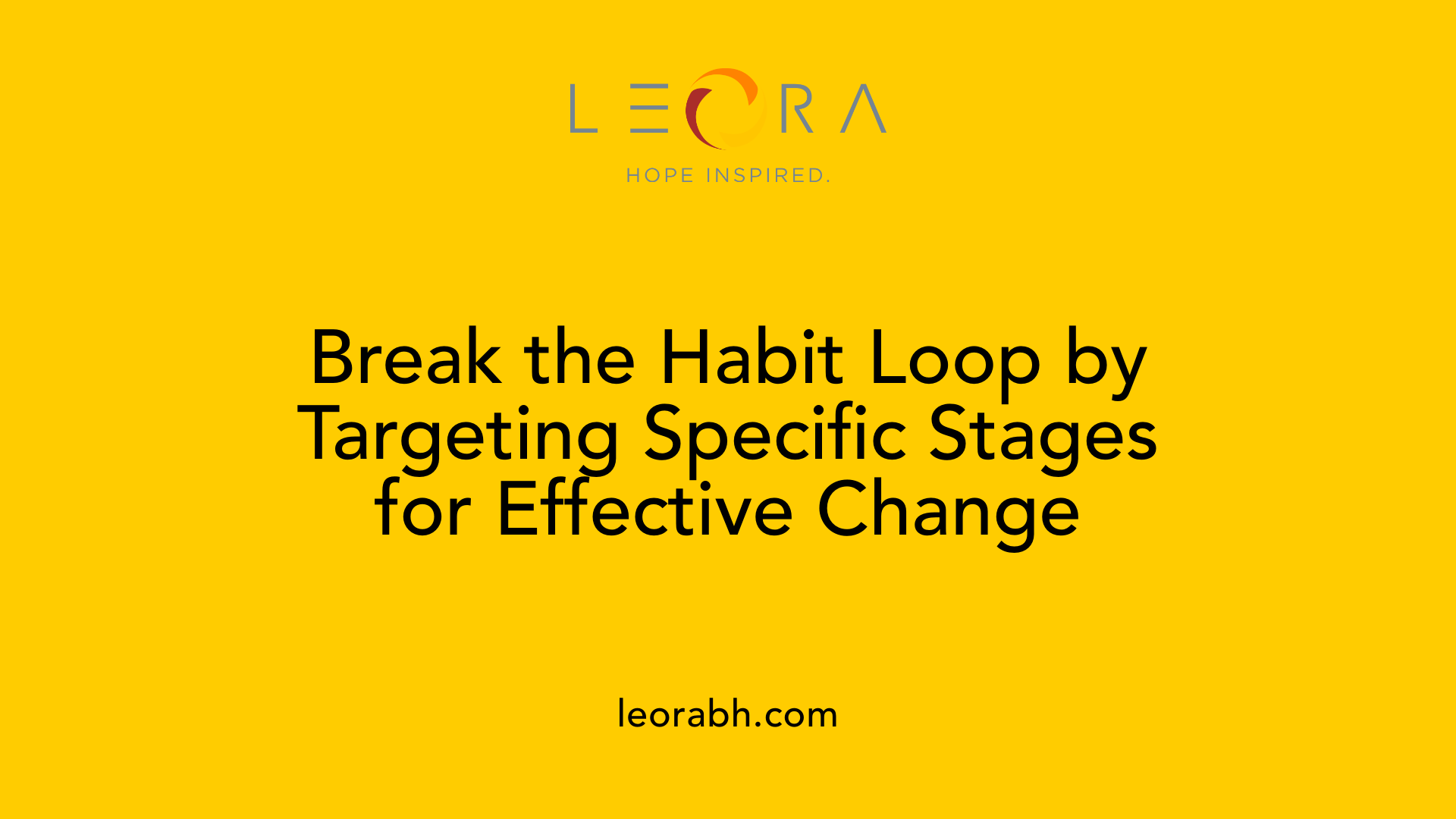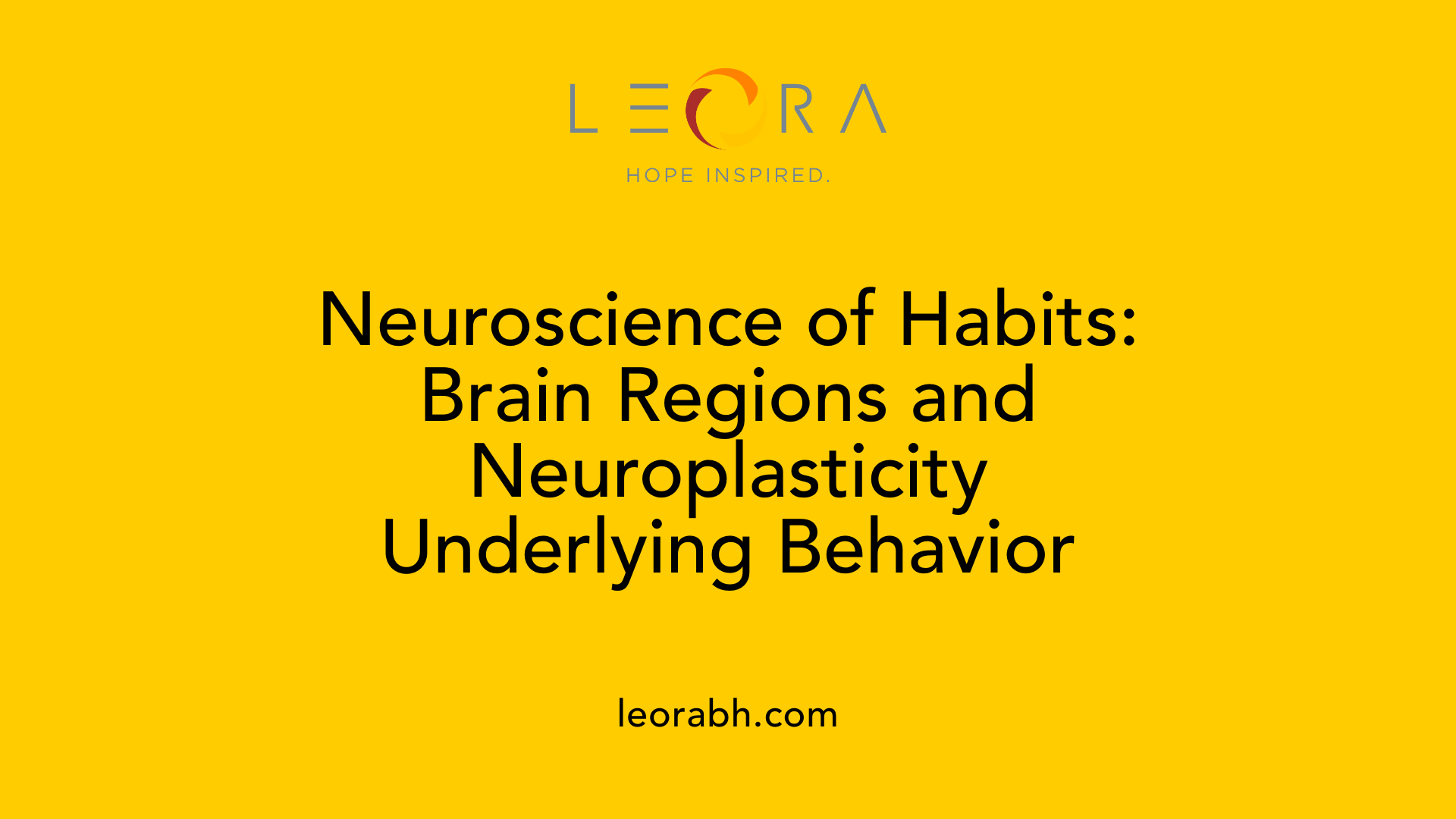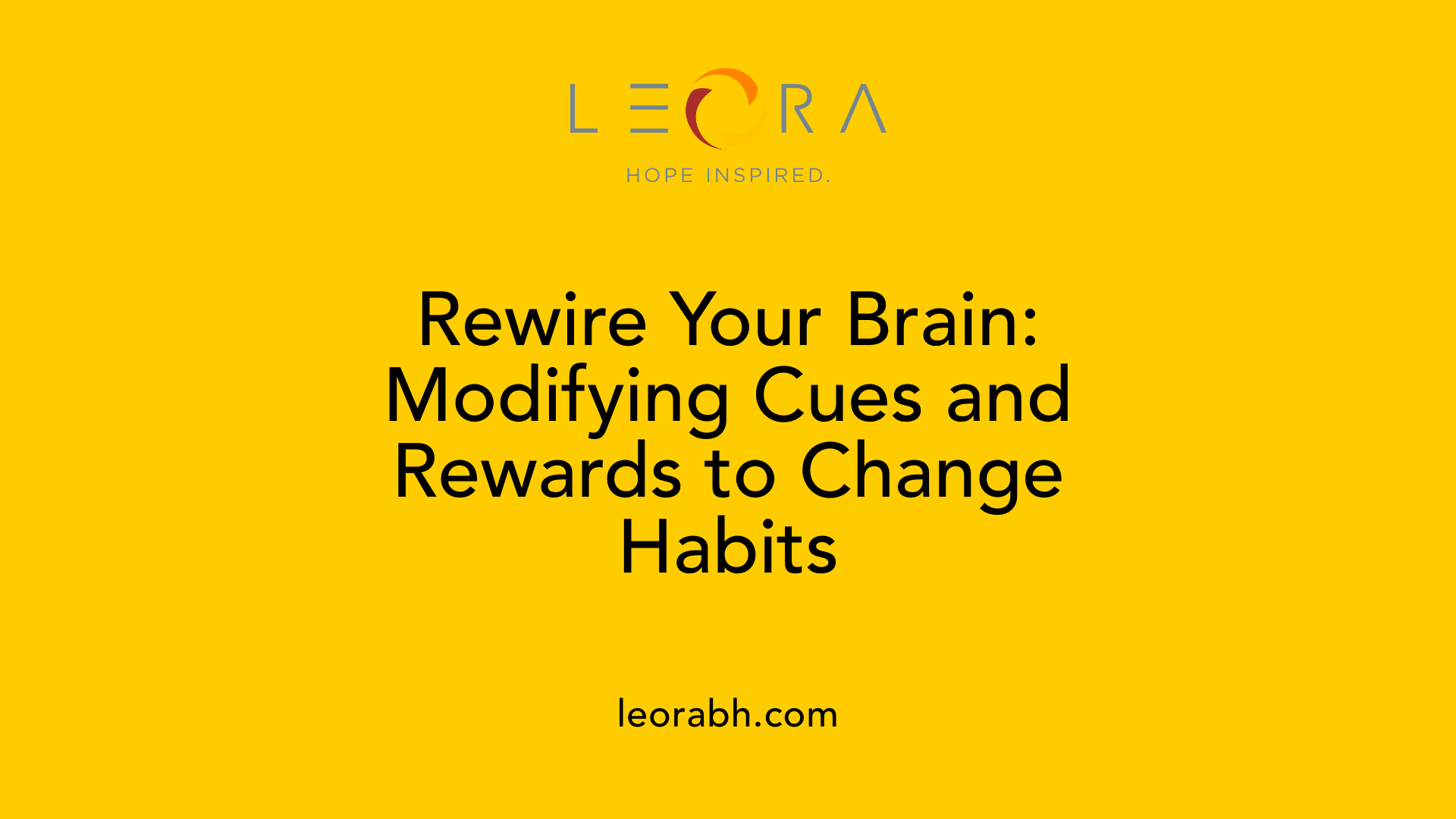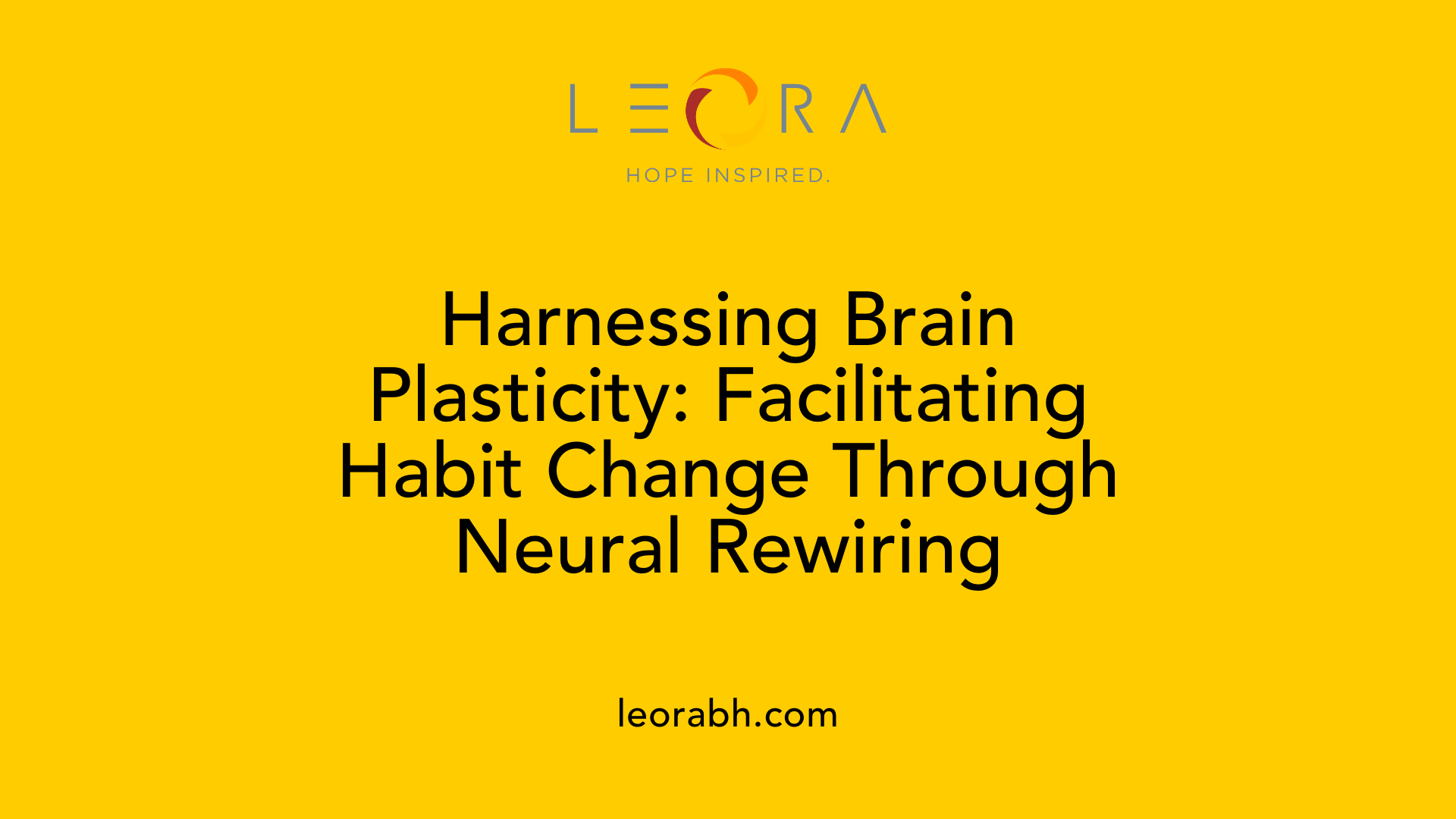The science behind habits and how they change during therapy
Unlocking Neural Pathways: The Mechanics of Habit Formation and Change
Understanding the Foundations of Habit Behavior
Habits are automatic behaviors driven by repeated actions in specific contexts. They operate largely below our conscious awareness, conserving mental energy and enabling efficient functioning. To comprehend how habits form and evolve—especially during therapy—it's crucial to explore the brain's underlying mechanisms, including neural circuits, neuroplasticity, and behavioral models. This article delves into the science of habit formation, the role of brain regions, and effective strategies used in behavioral interventions.
The Four Stages of Habit Formation

What are the four stages of habit formation?
Habit formation occurs through a cyclical process involving four interconnected stages: cue, craving, response, and reward. These stages create a neurological loop that reinforces behaviors, making actions automatic over time.
The cycle begins with a cue—an external or internal trigger such as a time of day, location, emotional state, or social environment. This cue signals the brain that a certain behavior might lead to a rewarding outcome. For example, feeling stressed might cue the behavior of reaching for comfort food.
Following the cue is the craving, which is the motivational desire to seek out or fulfill the cue. This craving drives the individual towards performing a specific behavior. Cravings are fueled by the anticipated reward or relief from discomfort.
The response is the actual behavior or routine performed in response to the craving. This can be anything from checking your phone when it vibrates to taking a walk after feeling anxious. During repetition, responses become more automatic, requiring less conscious effort.
Finally, the reward is the positive outcome or satisfaction received from performing the response. Rewards can be tangible, such as a taste of chocolate, or psychological, like feeling relaxed or accomplished. The reward helps to reinforce the behavior, strengthening the habit loop.
Understanding each stage is essential to changing habits. For example, modifying the cue or making the reward less satisfying can disrupt the cycle. By targeting these specific parts of the habit loop, it becomes easier to develop new, healthier behaviors or break unwanted habits.
In summary, the habit loop—cue, craving, response, and reward—drives automatic behaviors through a neurological cycle. Recognizing and altering these stages are fundamental strategies in effective habit change and long-term behavior modification.
Neurological Foundations of Habit Formation

What is the science behind how habits are formed and maintained in the brain?
Habits develop through a neurological process known as the habit loop, which consists of cues, routines (behaviors), and rewards. Over time, these elements form a self-reinforcing cycle that makes behaviors automatic. When a cue triggers a routine, the brain’s reward system releases dopamine, reinforcing the behavior and strengthening the association.
The basal ganglia, a deep-seated brain structure, is essential in automating these behaviors. It shifts control from the prefrontal cortex—responsible for deliberate decision-making—to subconscious routines as habits become ingrained. This neural shift allows actions to occur with minimal conscious effort, conserving mental resources.
Neural circuits involving the striatum and other parts of the neocortex undergo plastic changes, enabling the maintenance of habits. These adaptations through neuroplasticity solidify the behavior patterns, making them difficult to change without deliberate effort. Techniques such as mindfulness or altering environmental cues can help disrupt these automatic loops, facilitating the formation of new, healthier habits.
How do neuroplasticity and specific brain regions influence habit formation and change?
Neuroplasticity, the brain’s ability to reorganize itself by forming new neural connections, plays a vital role in both creating and modifying habits. When a habit forms, repeated behaviors strengthen the neural pathways within the basal ganglia, especially in the dorsolateral striatum, which stores automatic routines.
Simultaneously, the prefrontal cortex is involved in goal-directed behaviors and decision-making. Initially, new behaviors involve active engagement of this brain region. However, with repetition, control shifts towards the basal ganglia, making behaviors more automatic.
Conscious practices like reflection, visualization, and environmental changes can stimulate neuroplasticity, encouraging the brain to develop new pathways. This flexibility allows individuals to replace old habits with new ones. The dynamic interaction between these brain regions—driven by the brain’s plasticity—underpins our ability to maintain or modify habits over time.
Habit Loops and Behavior Regulation

What are habit loops and how do they regulate behavior?
Habit loops are mental frameworks that explain how habits are formed and sustained. They consist of three main components: a cue, a routine, and a reward. The cue is an initial trigger—such as a specific time, emotional state, or external environment—that prompts the behavior. The routine is the habitual action or response that follows the cue, and the reward is the positive reinforcement received after completing the routine, which increases the likelihood of repeating the behavior.
The brain's basal ganglia plays a crucial role in creating these habits by chunking sequences of behaviors into automatic routines, reducing the need for conscious effort. Over time, repeated interactions among these components strengthen the loop, making the behavior more automatic.
Understanding each part of the habit loop allows individuals and therapists to target specific elements. For example, changing the cue or modifying the routine while preserving the reward can help reform undesirable habits. Overall, habit loops regulate behavior by turning repeated actions into automatic responses, enabling efficient functioning but also presenting opportunities for deliberate modification to adopt healthier habits.
How do habit loops function during therapy and behavior change interventions?
In therapeutic settings, recognizing habit loops helps clinicians identify the triggers that lead to unwanted behaviors. Addressing these loops involves interrupting the habitual cycle, either by altering the cue, replacing the routine with a healthier behavior, or adjusting the reward.
One common strategy is habit reversal, where the routine is swapped out while keeping the same cue or reward to weaken the old habit. Techniques such as habit stacking—linking new, positive habits to existing routines—or modifying environmental cues, like removing triggers, support the development of new, beneficial loops.
By consciously rewiring these automatic patterns, clients can replace negative behaviors with positive, sustainable habits. This process leverages the brain’s natural tendency to automate routines, making behavior change more achievable and lasting. Overall, modifying habit loops is central to successful therapy, empowering individuals to regain control over their actions and develop healthier routines.
The Influence of Neural Mechanisms in Habit Change During Therapy

How do neuroplasticity and specific brain regions influence habit formation and change?
Neuroplasticity is the brain's ability to reshape its neural connections through structural and functional modifications. This capacity is essential for both establishing new habits and unlearning old ones. The basal ganglia, especially the dorsolateral striatum, play a pivotal role in storing and automating habitual behaviors that become second nature through repetitive practice.
Conversely, the prefrontal cortex (PFC) is active during goal-directed behaviors, enabling conscious decision-making and behavioral control. When individuals intentionally reflect on their habits, employ visualization, or change their environment, neuroplastic mechanisms facilitate the formation of new neural pathways. These processes allow the brain to transition from stimulus-response habits to more deliberate, value-driven actions, supporting persistent behavior change.
This dynamic interaction among brain structures, guided by neuroplasticity, underscores how habits are ingrained and can be altered. Techniques that stimulate reflection and adaptation harness this flexibility, promoting the rewiring needed for breaking undesirable habits and strengthening healthier routines.
What neural factors influence the ability to change habits during therapy?
Several neural factors affect the success of habit change efforts in therapy. The competition between the goal-directed system, primarily involving the prefrontal cortex, and the habitual system housed in the basal ganglia is central. When individuals are under stress, fatigue, or emotional upheaval—such as anxiety or anger—the functioning of the PFC dims, impairing our capacity for conscious control and making automatic behaviors harder to override.
Supporting self-regulation through mindfulness, relaxation, and stress-reduction strategies can bolster prefrontal activity. This enhancement aids in weakening the stimulus-response links that sustain habits, giving individuals more control over their behaviors. Furthermore, neuroplasticity supports this process: engaging in mental rehearsal, reflection, and modifications to the environment encourages the rewiring of neural circuits.
Such neural flexibility makes it easier to adopt new, healthier behaviors, while diminishing the grip of maladaptive habits. Understanding these neural dynamics helps tailor therapeutic interventions, ensuring they effectively leverage the brain’s capacity to reorganize and promote lasting change.
Strategies for Habit Modification During Therapy
What strategies are effective for modifying habits through psychological or therapeutic interventions?
Effective approaches to changing habits in therapy involve a range of behavioral techniques and environmental adjustments. Setting SMART goals—specific, measurable, achievable, relevant, and time-bound—helps clients target manageable changes.
Self-monitoring, such as keeping habit logs or using reminders, increases awareness of behaviors and triggers. Reinforcement strategies, like rewarding progress, strengthen new routines and make them more automatic.
Theories like habit theory, transtheoretical model, and self-determination theory guide personalized treatment plans that consider a person’s readiness and motivation. Techniques such as cognitive-behavioral therapy (CBT), motivational interviewing, and problem-solving therapy address resistance, ambivalence, and barriers.
Creating stable environmental cues through stimulus control—such as placing healthy foods at eye level—can promote positive habits. 'Nudge' interventions subtly steer choices without restricting freedom, making healthy options more accessible.
Combining these science-backed methods with professional support increases the likelihood of lasting change, helping clients replace unhelpful habits with beneficial ones.
How can mindfulness and values-based actions contribute to habit change in therapy?
From a scientific standpoint, mindfulness enhances self-regulation by increasing attention control and emotional awareness. Practicing mindfulness induces neuroplastic changes in brain areas like the prefrontal cortex and anterior cingulate cortex, which are involved in decision-making and impulse control.
This mental state reduces activity in networks linked to rumination and automatic, unhealthy behaviors. Consequently, clients become more aware of their triggers and emotional responses, gaining control over habitual reactions.
Values-based actions further strengthen this process by aligning behaviors with personal significance, boosting motivation and autonomous decision-making. When clients act in accordance with their core values, they reinforce a sense of purpose and commitment, increasing the sustainability of behavior change.
Together, mindfulness and values-driven actions create an integrated neurobehavioral framework that facilitates the dissolution of maladaptive habits and promotes the formation of healthier routines rooted in individual goals and values.
Models and Insights into Habit Formation and Change

What research-based models explain how habits are formed and changed?
Scientific research provides several frameworks for understanding how habits develop and can be altered. One foundational model is the habit loop, which consists of three stages: cue, routine, and reward. This cycle explains how associating a specific cue with a behavior and its subsequent reward can strengthen automatic responses through associative learning. Over time, these responses become ingrained, allowing behaviors to happen unconsciously.
Another influential framework is the transtheoretical model, also known as the stages of change. It describes a person's journey through five stages: precontemplation, contemplation, preparation, action, and maintenance. Tailoring interventions to an individual's current stage helps facilitate sustained behavior change by emphasizing the importance of repeated practice within consistent environments.
The theory of planned behavior and social cognitive theory further illuminate the process, highlighting how intentions, confidence in one's ability (self-efficacy), and observational learning influence habit formation. These models suggest that seeing others perform a behavior or believing in one's capacity to change can significantly impact initiation and persistence of new routines.
An emerging concept is the habit discontinuity hypothesis, which posits that major life changes—such as relocating—disrupt existing cues. Such disruptions create opportunities to replace old habits with new ones, as the habitual environment is temporarily altered.
Contemporary science also leverages big data and technology to understand habits more deeply. Digital tools and apps can track real-world cues and behaviors, providing detailed insights into how habits are triggered and maintained. These data-driven approaches support the development of personalized strategies for lasting change, making the process more targeted and efficient.
| Model/Framework | Main Focus | Practical Application | Additional Insights |
|---|---|---|---|
| Habit Loop | Cue, routine, reward | Identifying and modifying cues or rewards to change habits | Repetition solidifies automatic responses |
| Transtheoretical Model | Readiness to change | Tailoring interventions to an individual’s stage | Emphasizes gradual progress and relapse prevention |
| Theory of Planned Behavior | Intentions and self-efficacy | Building confidence and motivation | Highlights the role of social influences |
| Habit Discontinuity | Environmental change | Using life transitions to foster new habits | Disrupts existing cue-behavior links |
| Data & Technology | Behavioral tracking | Using apps and sensors for personalized feedback | Facilitates precise habit intervention |
Understanding these models deepens our grasp of the mechanisms behind habit formation and opens pathways for targeted, effective behavioral interventions.
The Role of Mindfulness and Values in Habit Change
How do mindfulness and values-based actions influence habit change from a scientific perspective?
From a scientific standpoint, mindfulness and values-based actions contribute significantly to altering habitual behaviors by engaging specific neural circuits involved in self-regulation, motivation, and learning processes.
Mindfulness enhances an individual's capacity for attention control and emotional regulation. Neuroplastic changes occur in key brain regions such as the prefrontal cortex (PFC) and the anterior cingulate cortex (ACC). These areas are responsible for executive functions, including decision-making, impulse control, and emotional processing. As mindfulness practice strengthens these regions, activity within networks associated with rumination, stress, and maladaptive habits decreases, making automatic responses more manageable.
This neuroadaptation supports breaking undesired habits by reducing their automatic strength and allowing space for deliberate, healthier choices. Practicing mindfulness can also increase self-awareness, enabling individuals to recognize triggers and cravings before acting on them, which is essential for habit substitution.
Values-based actions play a crucial role in reinforcing motivation and promoting autonomy. When behaviors are aligned with personal core values, they gain intrinsic motivational support, making habit formation more sustainable. This alignment activates brain regions linked to reward and motivation, like the ventral striatum, encouraging continuous engagement in positive routines.
Together, mindfulness and values-driven behaviors create a neurobehavioral framework that facilitates lasting change. They engage a network of neural mechanisms that govern attention, emotional regulation, and reward processing. This integrated approach helps individuals not only change their routines but also foster a deeper connection with the reasons behind their behavior, supporting resilience against relapse.
In summary, scientific research shows that mindfulness and values-based actions modify brain activity and neural pathways—that underpin habit formation—by enhancing self-control, motivation, and emotional regulation. These neural modifications make it easier to replace old habits with new, healthier behaviors that reflect personal goals and values.
Harnessing Neuroscience for Lasting Change
Understanding the intricate neural orchestration behind habit formation and change offers valuable insights into effective therapeutic strategies. By targeting specific brain regions, modulating neural circuits through mindfulness, and applying behavioral techniques grounded in scientific models, clinicians and individuals can facilitate sustainable behavior modification. Recognizing that habits are learned behaviors encoded deep within neural pathways underscores the importance of patience, consistency, and environmental adjustments in the journey toward lasting change. Future advances in neuroscience and technology continue to refine our approaches, making habit change during therapy not only possible but increasingly precise and personalized.
References
- Making health habitual: the psychology of 'habit-formation' and ...
- The Science of Habit: How to Rewire Your Brain - Healthline
- The Science of Habits | Psychology Today
- The Science Behind Habit Formation - Counselling Connection
- The Power Of Habit Forming And The Science Behind It | BetterHelp
- The Science of Creating and Maintaining Habits - CAPS
- How Are Habits Formed? The Psychology of Habit Formation
- Exploring the Brain's Relationship to Habits | NSF
- Adopting healthy habits: What do we know about the science of ...
Find Your Inner Light
Related Articles
Schedule an Assessment
Leora Behavioral Health provides comprehensive treatment services, including ambulatory detox, mental health IOP, and SUD IOP, to support your journey toward lasting recovery.
Our caring team will guide you through the admissions process and create a personalized treatment plan tailored to your unique needs. We welcome walk-ins. If you or a loved one is struggling, reach out today. We’re here to help.


.svg)




.svg)
.svg)
.svg)
.svg)
